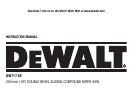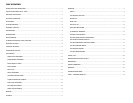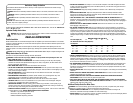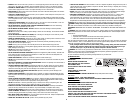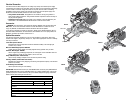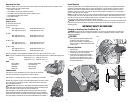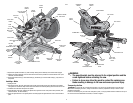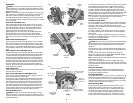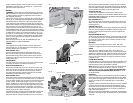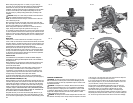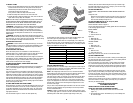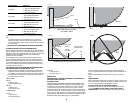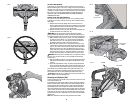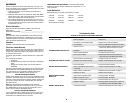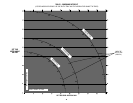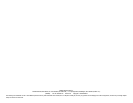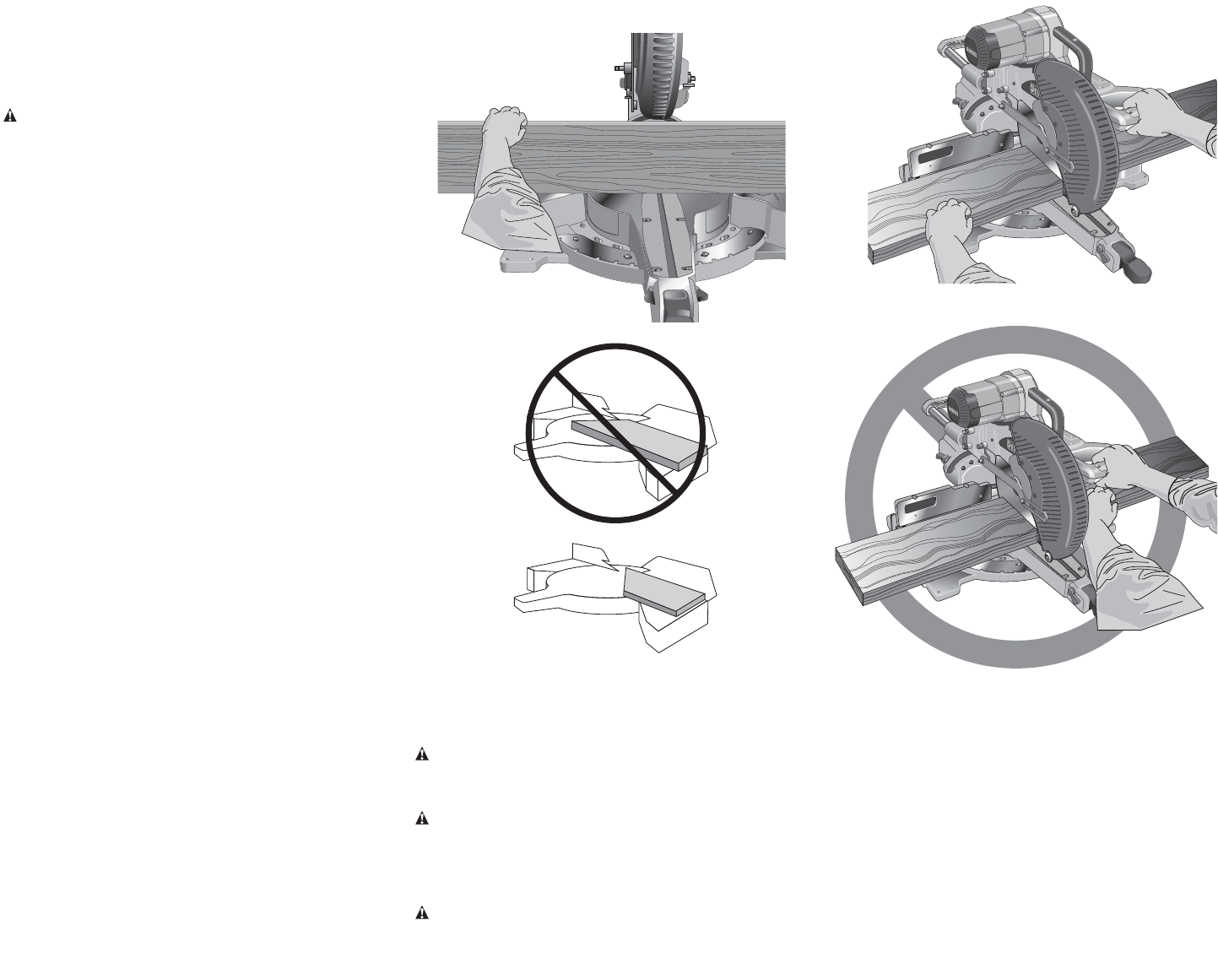
88
When cutting anything larger than 111.8 mm (4.4") [76.2 mm (3")
45º miter] use an out-down-back motion with the rail lock knob loosened.
Pull the saw out, toward you, lower the saw head down toward the
workpiece, and slowly push the saw back to complete the cut. Do not allow
the saw to contact the top of the workpiece while pulling out. The saw
may run toward you, possibly causing personal injury or damage to the
workpiece.
CAUTION: Always use a work clamp to maintain control and reduce
the risk of workpiece damage and personal injury.
NOTE: The rail lock knob shown in Figure 4 must be loose to allow the
saw to slide along its rails.
Miter crosscuts are made with the miter arm at some angle other than
zero. This angle is often 45º for making corners, but can be set anywhere
from left or right. Make the cut as described above.
When cutting wider workpieces wider than a 2 x 6 that are shorter in
length, always place the longer side against the fence (Fig. 12).
To cut through an existing pencil line on a piece of wood, match the angle
as close as possible. Cut the wood a little too long and measure from the
pencil line to the cut edge to determine which direction to adjust the miter
angle and recut. This will take some practice, but it is a commonly used
technique.
BEVEL CUTS
A bevel cut is a crosscut made with the saw blade at an angle to the
wood. In order to set the bevel, loosen the bevel lock handle, lift the bevel
latch lever, Figure 4, and move the saw to the left or right as desired. (It is
necessary to move the fence to allow clearance). Once the desired bevel
angle has been set, tighten the bevel clamp handle firmly.
Bevel angles can be set from 48º right to 48º left and can be cut with
the miter arm set between 50º right or 60º left. At some extreme angles,
the right or left side fence might have to be removed. To remove the left
or right fence, unscrew the fence capturing screw and fence adjustment
knob several turns and slide the fence out.
QUALITY OF CUT
The smoothness of any cut depends on a number of variables. Things like
material being cut, blade type, blade sharpness and rate of cut all contribute to
the quality of the cut.
When smoothest cuts are desired for molding and other precision work,
a sharp (60 tooth carbide) blade and a slower, even cutting rate will
produce the desired results.
Ensure that material does not creep while cutting, clamp it securely in
place. Always let the blade come to a full stop before raising arm.
If small fibers of wood still split out at the rear of the workpiece, stick
a piece of masking tape on the wood where the cut will be made. Saw
through the tape and carefully remove tape when finished.
For varied cutting applications, refer to the list of recommended saw
blades for your saw and select the one that best fits your needs (Page 5).
BODY AND HAND POSITION (FIG. 13A)
Proper positioning of your body and hands when operating the miter saw
will make cutting easier, more accurate and safer. Never place hands near
cutting area. Place hands no closer than 6" (152.4 mm) from the blade.
Hold the workpiece tightly to the table and the fence when cutting. Keep
hands in position until the trigger has been released and the blade has
completely stopped. ALWAYS MAKE DRY RUNS (UNPOWERED) BEFORE
FINISH CUTS SO THAT YOU CAN CHECK THE PATH OF THE BLADE. DO
NOT CROSS HANDS, AS SHOWN IN FIGURE 13B.
Keep both feet firmly on the floor and maintain proper balance. As you
move the miter arm left and right, follow it and stand slightly to the side
of the saw blade. Sight through the guard louvers when following a pencil
line.
CLAMPING THE WORKPIECE
WARNING: To reduce the risk of serious personal injury, turn off the
tool and disconnect it from the power source before attempting to move
it, change accessories or make any adjustments accept as written in laser
adjustment instructions.
WARNING: A workpiece that is clamped, balanced and secure before
a cut may become unbalanced after a cut is completed. An unbalanced
load may tip the saw or anything the saw is attached to, such as a table
or workbench. When making a cut that may become unbalanced, properly
support the workpiece and ensure the saw is firmly bolted to a stable
surface. Personal injury may occur.
WARNING: The clamp foot must remain clamped above the base of the
saw whenever the clamp is used. Always clamp the workpiece to the base
of the saw–not to any other part of the work area. Ensure the clamp foot
is not clamped on the edge of the base of the saw.
If you cannot secure the workpiece on the table and against the fence by
hand, (irregular shape, etc.) or your hand would be less than 152.4 mm
(6") from the blade, a clamp or other fixture must be used.
For best results use the DW7082 clamp made for use with your saw.
Another type of clamp may be supplied with your DW717. To purchase
the DW7082 contact your local retailer or DEWALT service center.
Other aids such as spring clamps, bar clamps or C-clamps may be
appropriate for certain sizes and shapes of material. Use care in selecting
and placing these clamps. Take time to make a dry run before making the
cut. The left or right fence will slide from side to side to aid in clamping.
FIG. 12
PROPER CUT
FIG. 13A
IMPROPER CUT
FIG. 13B
FIG. 11



